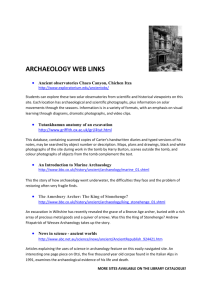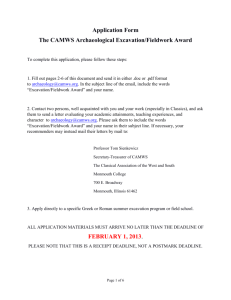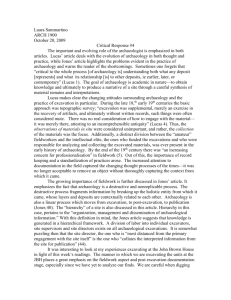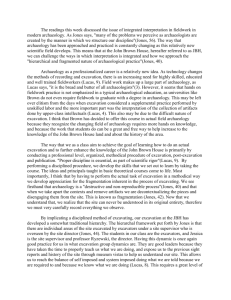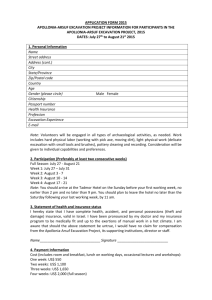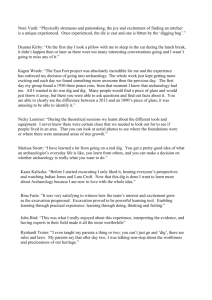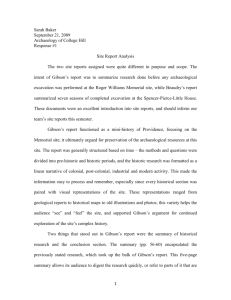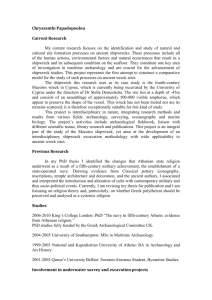Video Project Write Up
advertisement
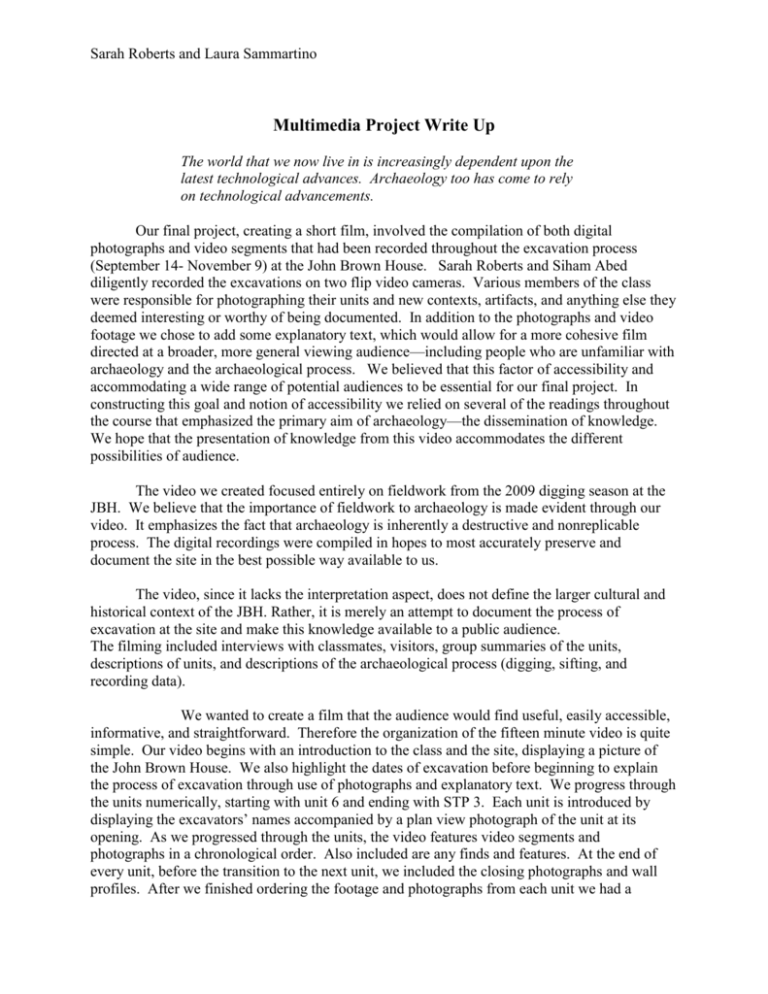
Sarah Roberts and Laura Sammartino Multimedia Project Write Up The world that we now live in is increasingly dependent upon the latest technological advances. Archaeology too has come to rely on technological advancements. Our final project, creating a short film, involved the compilation of both digital photographs and video segments that had been recorded throughout the excavation process (September 14- November 9) at the John Brown House. Sarah Roberts and Siham Abed diligently recorded the excavations on two flip video cameras. Various members of the class were responsible for photographing their units and new contexts, artifacts, and anything else they deemed interesting or worthy of being documented. In addition to the photographs and video footage we chose to add some explanatory text, which would allow for a more cohesive film directed at a broader, more general viewing audience—including people who are unfamiliar with archaeology and the archaeological process. We believed that this factor of accessibility and accommodating a wide range of potential audiences to be essential for our final project. In constructing this goal and notion of accessibility we relied on several of the readings throughout the course that emphasized the primary aim of archaeology—the dissemination of knowledge. We hope that the presentation of knowledge from this video accommodates the different possibilities of audience. The video we created focused entirely on fieldwork from the 2009 digging season at the JBH. We believe that the importance of fieldwork to archaeology is made evident through our video. It emphasizes the fact that archaeology is inherently a destructive and nonreplicable process. The digital recordings were compiled in hopes to most accurately preserve and document the site in the best possible way available to us. The video, since it lacks the interpretation aspect, does not define the larger cultural and historical context of the JBH. Rather, it is merely an attempt to document the process of excavation at the site and make this knowledge available to a public audience. The filming included interviews with classmates, visitors, group summaries of the units, descriptions of units, and descriptions of the archaeological process (digging, sifting, and recording data). We wanted to create a film that the audience would find useful, easily accessible, informative, and straightforward. Therefore the organization of the fifteen minute video is quite simple. Our video begins with an introduction to the class and the site, displaying a picture of the John Brown House. We also highlight the dates of excavation before beginning to explain the process of excavation through use of photographs and explanatory text. We progress through the units numerically, starting with unit 6 and ending with STP 3. Each unit is introduced by displaying the excavators’ names accompanied by a plan view photograph of the unit at its opening. As we progressed through the units, the video features video segments and photographs in a chronological order. Also included are any finds and features. At the end of every unit, before the transition to the next unit, we included the closing photographs and wall profiles. After we finished ordering the footage and photographs from each unit we had a segment on visitors. The very end of our video summarized the key finds from every unit. In creating the final product we hope that the synthesis of the digital recordings have created an easy to follow and enjoyable, yet informative film! Finally, in addition to our work on the video, we also created an informative website that documents our whole excavation process. We used the website software Archaeotechnics, which creates an online platform for the organization of all of our records from the excavation. We scanned and uploaded all context sheets, photo and feature logs, photos and videos. Then we organized folders and created links to all of the various media from one site. This will allow all users to access these materials by unit, date, or context.


